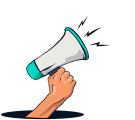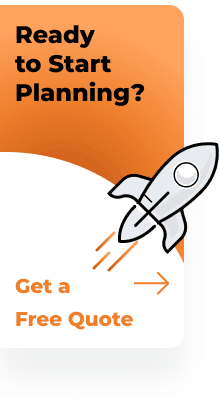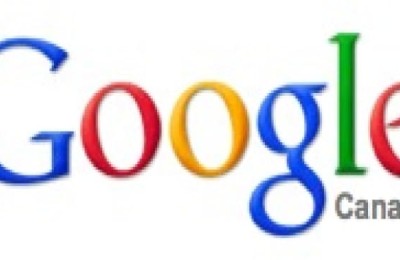The dialogue around mental health has dramatically shifted over the past decade, from a stigmatized and sidelined issue to a central focus of public health campaigns and corporate initiatives.
This change is accompanied by an explosion in the way organizations approach mental health advocacy, with creativity becoming a powerful tool to spread awareness, educate, and destigmatize.
This article will explore the novel ways digital mental health companies and other organizations are using creative campaigns to champion mental health, diving deep into what makes the mental health ad campaign successful.
Rebranding Mental Health Ads for the Digital Age
In the realm of mental health advertising, a paradigm shift is underway as digital mental health companies pioneer innovative search engine marketing strategies to engage and support diverse audiences in the digital age.
This evolution is marked by a departure from traditional awareness-raising tactics, instead focusing on enhancing the accessibility and relatability of mental health support through a carefully crafted mental health ad campaign. Key elements of this transformative approach include:
- Authentic Storytelling
- Inclusive Language and Imagery
- Strategic Platform Placement
As the landscape of mental health ads continues to evolve, it is clear that the most effective campaigns will be those that prioritize authenticity, inclusivity, and strategic placement.
By embracing these core principles, mental health adverts can not only raise awareness but also provide tangible support to individuals from all walks of life, ultimately contributing to the destigmatization and improved well-being of our society as a whole.
Leveraging Positive Affirmations in Mental Health Adverts
With the integration of positive affirmations in mental health advertising, various campaigns have emerged as a pivotal strategy for enhancing the efficacy and impact of these initiatives.
By leveraging the power of affirmative language, digital mental health companies, and behavioral health marketers are crafting a mental health ad campaign that resonates with their target audience on a profound level. The strategic incorporation of positive affirmations offers a multitude of benefits:
- Memorable and Impactful Messaging
- Visually Engaging Content Creation
- Reinforcement through Repetition
The strategic integration of positive affirmations has proven to be a potent tool in the arsenal of mental health adverts and behavioral health marketers.
By harnessing the power of affirmative language, visually engaging content, and consistent repetition, these campaigns are paving the way for a more proactive and empowering approach to mental health promotion.
The Role of Humor and Playfulness in Mental Health Ad Campaigns
The integration of humor and playfulness in mental health advertising campaigns has emerged as a transformative approach, revolutionizing the industry’s communication strategies.
By employing these elements, these mental health adverts have successfully navigated the balance between conveying critical information and maintaining a respectful, approachable tone. The incorporation of humor in mental health ads offers several distinct advantages:
- Increased Accessibility
- Enhanced Emotional Connection
- Improved Message Retention
- Wider Audience Reach
However, it is crucial to emphasize that the utilization of humor in mental health ads necessitates a meticulous and sensitive approach.
When executed with skill and empathy, the fusion of humor and playfulness in a mental health ad campaign can be a potent tool for fostering understanding, encouraging dialogue, and ultimately, promoting mental well-being on a societal scale.
Behavioral Health Marketing and Digital Technology
The integration of digital technology into behavioral health marketing is revolutionizing the industry, enabling mental health organizations to engage with their target audience in innovative and impactful ways.
This relationship between technology and marketing is not only transforming the landscape of mental health advertising but also empowering individuals to take control of their mental well-being. Here are some key areas where digital technology is making a significant impact:
- Mobile Applications
- Virtual and Augmented Reality
- Social Media Campaigns
The intersection of behavioral health marketing and digital technology represents a paradigm shift in the way mental health services are promoted and accessed.
As technology continues to evolve, digital mental health companies must stay at the forefront of these advancements, harnessing their power to create impactful campaigns that resonate with their audience and drive positive change in the mental health landscape.
Engaging Audiences with Interactive Campaigns
The digital landscape has ushered in a new era of possibilities for mental health advertising, presenting innovative ways to engage audiences and promote behavioral health services.
One of the most significant advantages of this digital age is the ability to create interactive mental health adverts that not only capture attention but also encourage active participation, thereby enhancing the impact and memorability of the message.
An interactive mental health campaign can take various forms, each designed to resonate with the target audience and foster a sense of connection. Some key strategies include:
- Social Media Challenges and Hashtags
- Mobile and Web-Based Tools
- Gamification and Quizzes
As the landscape of behavioral health marketing continues to evolve, embracing interactive campaigns will be crucial for digital mental health companies looking to stand out in a competitive market.
By harnessing the power of interactivity, the mental health ad campaign cannot only raise awareness but also foster a deeper connection with its audience, ultimately driving meaningful change in the way society perceives and addresses mental health challenges.
Coordinating Cross-Industry Collaborations for Mental Health
In an era marked by rapid evolution and innovation, the mental health industry is undergoing a transformative shift towards cross-industry collaborations. This strategic approach leverages the expertise and resources of diverse sectors to create comprehensive mental health campaigns.
By forging alliances with key players in the fashion, media, education, and corporate sectors, mental health advocates are expanding their sphere of influence and engaging new audiences. These mental health adverts manifest in various forms, such as:
- Fashion and media partnerships
- Educational platform integrations
- Corporate wellness program
This collaborative approach represents a significant departure from traditional mental health ads, which often relied solely on the efforts of dedicated advocates.
As this trend continues to gain momentum, it holds the potential to revolutionize the landscape of behavioral health marketing and drive meaningful, large-scale change in societal attitudes toward mental well-being.
Creative mental health ads are not just about selling a product or service; they are about cultivating a society that values and prioritizes mental well-being.
By using the power of storytelling, innovative technologies, and cross-industry collaborations, these campaigns are leading the charge in creating a more empathetic and supportive world.
From the rebranding of mental health campaigns for the digital age to the role of humor and playfulness, each approach contributes to the overarching goal of supporting mental health.
The future is bright for mental health advocacy, and the creative behavioral health marketing campaigns we see today will no doubt evolve and inspire even greater change tomorrow.









